
Disciplined prioritization is arguably the most important competency for decision-makers and companies of any size. Executing your vision and goals with effective priorities and roadmaps can be the difference between success and failure for your business.
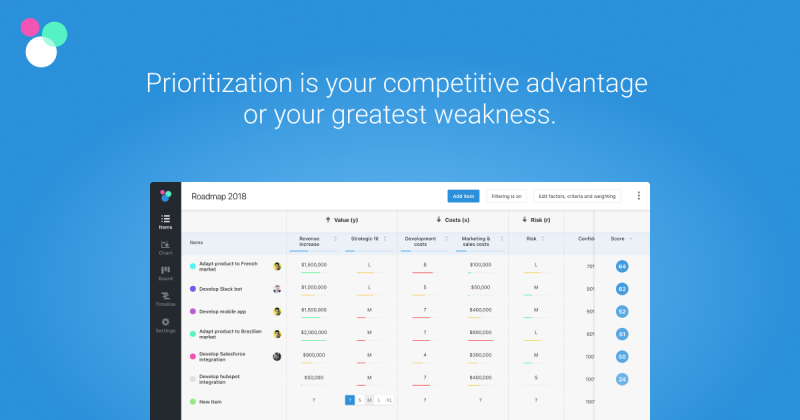
The cost of poor prioritization (or no prioritization) is largely influenced by your company size, sector, and region. Research shows that lack of prioritization is a universal challenge and one of the leading causes of waste for organizations.
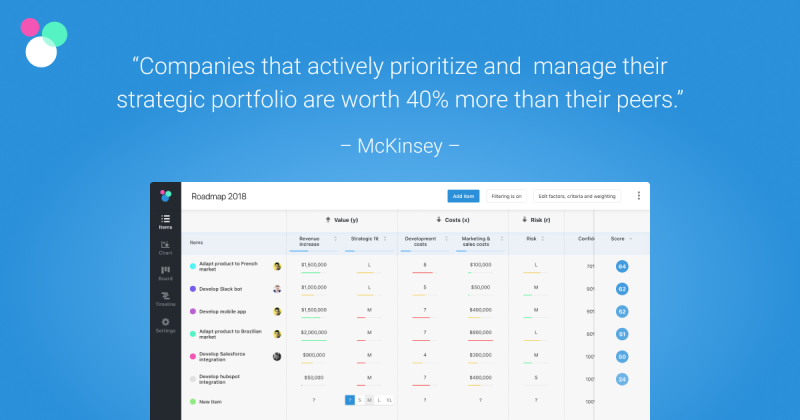
Looking at the example of IT deployments in North America, Gartner's research revealed that out of the $1 to $2 trillion invested annually, 30% or $300 to $600 billion is wasted. Much of this waste can be attributed to not "doing the right work."
Of course, sometimes leaders make mistakes and prioritize the wrong tasks - we're all human! But more often than that, the problem is that leaders don't prioritize at all. This issue comes down to broken or missing prioritization workflows and activities.
Get prioritization right in just 4 easy steps
Strategy and prioritization are ongoing and ever-evolving tasks. They are constantly influenced by changing internal and external conditions.
Strategies and planning workspaces can become outdated the moment certain parameters change. That's why it's essential to have a process in place that facilitates real-time, agile roadmapping.
Here are 4 steps to optimize your decision-making process:
Step 1: Define strategic value and cost drivers
The prioritization process itself comes down to a calculation of two competing factors:
1. The value of pursuing a given project, feature, or initiative
2. The related costs
You don't want to stop here, though. Your value and cost factors are usually multi-dimensional and include a range of sub-criteria that could even be weighted differently, for example:
On the value side, this could mean questioning whether a mid-term rise in revenue is more important than a long-term strategic fit?
Or, on the cost side, whether the development effort is more crucial for product success than the marketing dollars spent?
Sometimes this can feel like comparing apples and oranges, but mapping out the right criteria is the first key step to bring clarity to the process.
Check out our detailed guide on how to set up a prioritization framework yourself, or pick one of our ready to use templates built on the most effective decision-making methods that can guide you through this process. There are also specific guides for specific frameworks like the Kano model.
TIP: Once you have defined and weighted the value and cost drivers, ideally between 2 and 5 criteria per factor, map them out as columns in a table to allow you to visualize the process.

Step 2: Rate your projects, initiatives, or features
Once you have added your items to the table, you can start rating them for each of the value and cost drivers that you defined in Step 1. This creates a prioritized list based on data and objective factors.
It's wise to include collaborators in this part of the process to identify potential obstacles and to resolve any concerns that may impact decisions in the long run.
TIP: Transparency and communication are key to productive roadmapping. Involving the right team members and stakeholders helps communicate your roadmap more effectively, so everyone is on the same page.
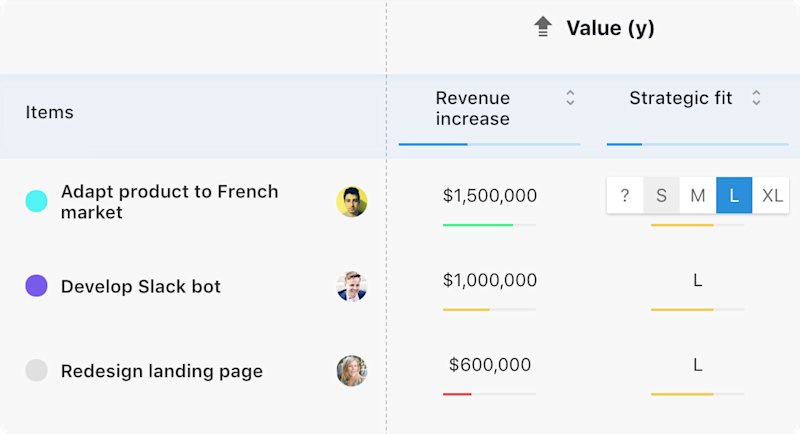
Step 3: Discuss your priorities and decide on the next steps
With all items being scored, you can now evaluate priorities and map them out on a 2x2 matrix. Having priority scores and visualized charts to hand allows you to discuss your priorities with your team and stakeholders and make decisions on the following:
Which items hold priority? Which items don't.
What is the timeline?
Who is in charge?

Visualizing your priorities in this way eradicates the need to make decisions based on gut feelings. It also makes it easier to get buy-in from the wider business on your decisions to communicate an objective business case.
Step 4: Communicate your priorities to get everyone aligned
Now that you have a roadmap based on actual priorities, it's important to share it with operational teams on the ground in a language they can understand. Kanbans or timelines are effective formats to communicate your priority matrix. This step is key to make sure everyone is aligned and working towards the same goals.
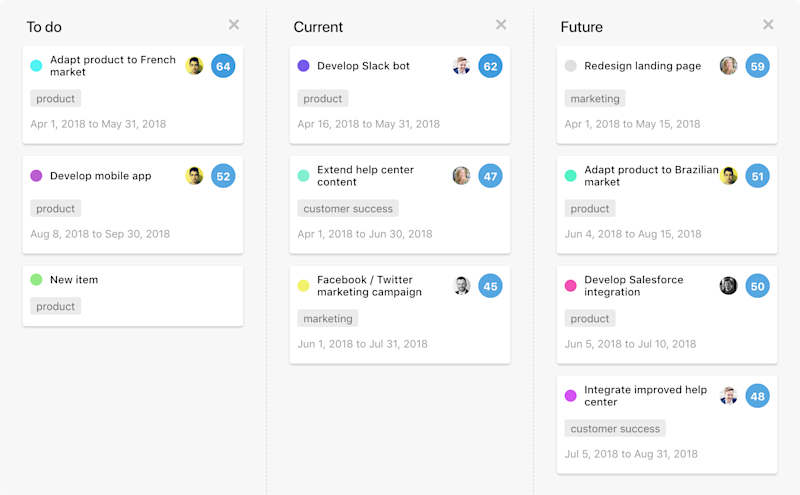
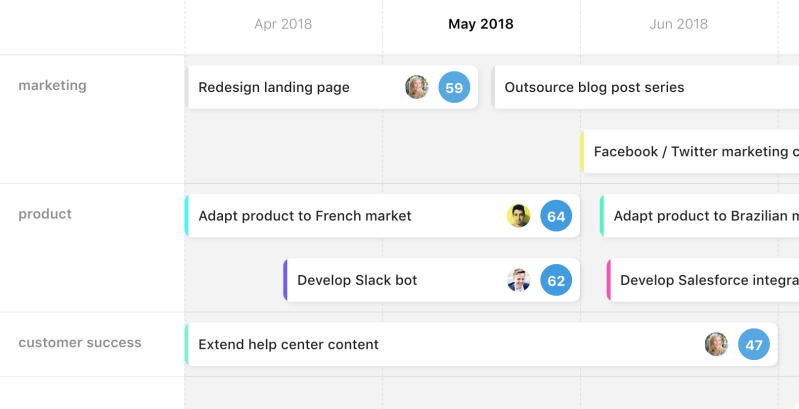
TIP: Remember that ongoing communication allows your team to work in an agile fashion. Make sure to schedule regular check-ins and team meetings to sync your strategic priorities to guarantee successful implementation.
Bringing structure and data-driven insights into your prioritization process is a sure-fire way to increase the success rates of your strategic projects, initiatives, or features. Real-time roadmapping is the most effective way to execute projects in both a systematic and agile way and drive ROI for your business. Update: We created a video for this article to make it easier to read, share, and understand.
https://www.youtube.com/watch?v=Xv42uxm9IaE
It's time to get started. Put the airfocus prioritization templates to test with our 14-day free trial and find out in minutes what you should focus on.

Malte Scholz

Read also






Prioritize with confidence

Experience the new way of doing product management



